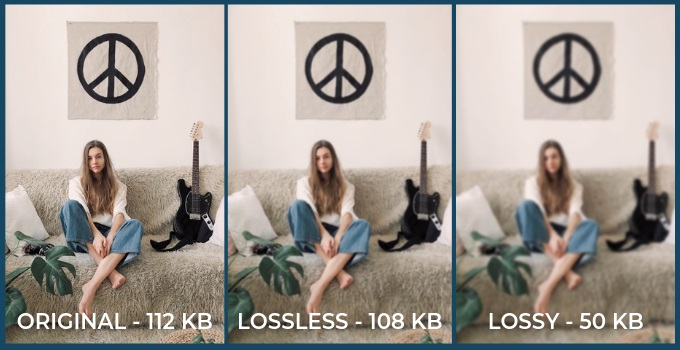Brief Introduction To The Differences Between Lossy And Lossless Compression Algorithms
Pcs And Smart Devices Compress Information And Content To Save Valuable Storage Space. This Feature, Which Is Also Very Important In Terms Of Bandwidth, Forms The Basis Of Data / Data Sharing And Storage In Today’s World, And It Can Say That It Is Almost Impossible To Use A Computer Without It.
Lossy And Lossless Compression Algorithms, You must have noticed that a photo with a volume of more than one megabyte, when shared in the form of an image through the Telegram social network, for example, has a much smaller volume after the upload process.
This example illustrates the compression phenomenon so that sharing is more easily accomplished and broadband is not occupied by Internet sharing and network servers.
There are many algorithms and methods in data compression, including two examples of the most common of which are Lossy and Lossless, but what are the differences between them, and which one is superior to the other? What is the scope of their use?
Learn more about the Lossy compression algorithm
The basis of the Lossy algorithm is to reduce the file size as much as possible by ignoring the information as much as possible. It is done by targeting information and data that seems incomprehensible and understandable. While the file size is significantly reduced, the changes and the final quality are noticeable to the user and the naked eye. The more a file is compressed, the more the rate decreases.

Common examples of a better understanding of the Lossy algorithm include JPEG and MP3 formats. An image file with the mentioned extension, which the algorithm in question has heavily compressed, has a smaller volume, and a reduction in quality, changes, and visual artifacts can be seen in it.
See the image below, for example; Loss of color integrity and flexibility, clarity, and detail are visible without even the slightest precision, indicating excessive compression.
On the other hand, the image that has been compressed with less intensity can be said to be almost no different from the original version, and only when you enlarge the image or try to edit it with specialized software such as Photoshop or MATLAB, the volume of details And information as a result of compression may become tangible.

In the case of audio files, the differences between the original and the original and compressed by the Lossy algorithm and the MP3 format are sometimes clearly understood, especially at low and high frequencies that an advanced audio system can make quite clear.
Of course, it should note that not all images with JPEG extension and MP3 audio are of shallow quality and, in most cases, are not in any way separate from the original content. For example, an MP3 audio file at 320 kbps is almost identical to the original version. Only advanced and specialized tools can reveal the differences between them, unavailable to 99% of users with general and everyday use.
Introduction to Lossless Compression Algorithm
The Lossless compression algorithm is the exact opposite of the Lossy method and does not analyze or delete data, which results in more content. This algorithm reduces the size of the data in various ways. Still, unlike the other algorithms mentioned, it does not delete and discard the information, so the decompressed content is no different from the original version and is precisely the same.

Examples include FLAC and ALAC formats for audio content, ZIP archive files, and PNG images. Audio files compressed by the Lossless algorithm are about half the original size with the same sampling rate. Many audio and video content streaming services, such as Apple Music, Spotify, Deezer, etc., compress their content through the algorithm in question to make it possible to stream them over the Internet and reduce bandwidth.
The ZIP format that almost everyone is familiar with is another example of using the Lossless algorithm.
Suppose this algorithm reduces the volume by destroying and discarding data. In that case, the software, game, or … that you have compressed at the time of subscription may no longer be applicable and potentially corrupted!

Now that we are more familiar with the Lossy and Lossless compression algorithms, we now turn to the beginning of the article and examine the question of their superiority over each other. In answer to this question, it should say that the two introduced algorithms have no dominion over each other, and each of them is very important and useful in its place.
When it comes to data archiving, the Lossless algorithm stands out and saves valuable storage space by reducing the size of files and contents without discarding information. As mentioned earlier, it is impossible to recreate content that the Lossy algorithm has compressed due to the deletion of information that, if it is, for example, software or …, maybe permanently corrupted.
On the article side, the Lossy compression algorithm plays a significant role in streaming or transmitting content wirelessly.
It is interesting to know that even the most expensive wireless headphones on the market, including Apple’s AirPods, depend on this algorithm to deliver audio from your smartphone to your ear because the bandwidth provided by wireless technologies such as Bluetooth is limited. Compression must do. . Another example is copying your favorite music files to a flash drive to listen to them in your car.











